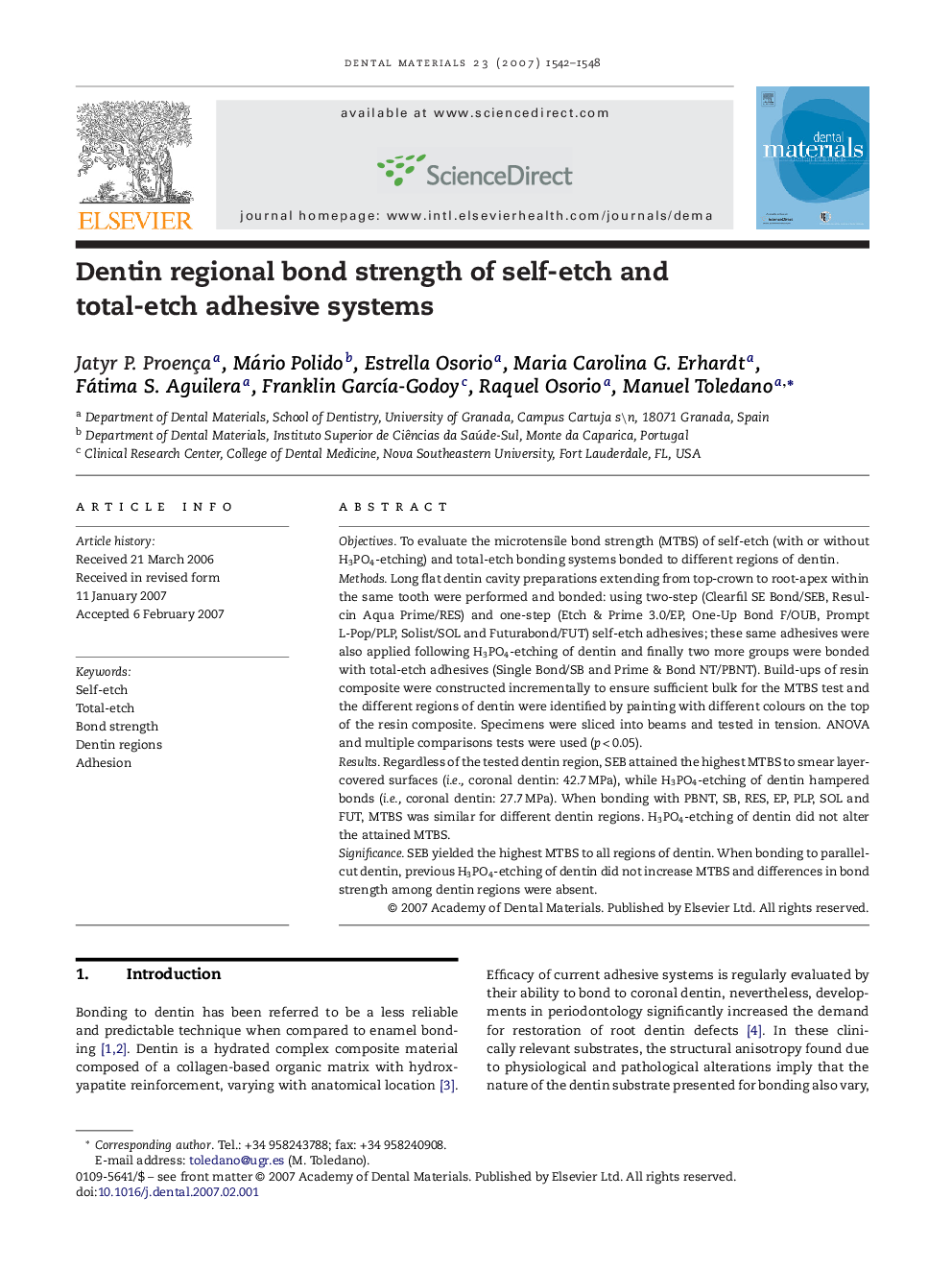| Article ID | Journal | Published Year | Pages | File Type |
|---|---|---|---|---|
| 1423099 | Dental Materials | 2007 | 7 Pages |
ObjectivesTo evaluate the microtensile bond strength (MTBS) of self-etch (with or without H3PO4-etching) and total-etch bonding systems bonded to different regions of dentin.MethodsLong flat dentin cavity preparations extending from top-crown to root-apex within the same tooth were performed and bonded: using two-step (Clearfil SE Bond/SEB, Resulcin Aqua Prime/RES) and one-step (Etch & Prime 3.0/EP, One-Up Bond F/OUB, Prompt L-Pop/PLP, Solist/SOL and Futurabond/FUT) self-etch adhesives; these same adhesives were also applied following H3PO4-etching of dentin and finally two more groups were bonded with total-etch adhesives (Single Bond/SB and Prime & Bond NT/PBNT). Build-ups of resin composite were constructed incrementally to ensure sufficient bulk for the MTBS test and the different regions of dentin were identified by painting with different colours on the top of the resin composite. Specimens were sliced into beams and tested in tension. ANOVA and multiple comparisons tests were used (p < 0.05).ResultsRegardless of the tested dentin region, SEB attained the highest MTBS to smear layer-covered surfaces (i.e., coronal dentin: 42.7 MPa), while H3PO4-etching of dentin hampered bonds (i.e., coronal dentin: 27.7 MPa). When bonding with PBNT, SB, RES, EP, PLP, SOL and FUT, MTBS was similar for different dentin regions. H3PO4-etching of dentin did not alter the attained MTBS.SignificanceSEB yielded the highest MTBS to all regions of dentin. When bonding to parallel-cut dentin, previous H3PO4-etching of dentin did not increase MTBS and differences in bond strength among dentin regions were absent.
